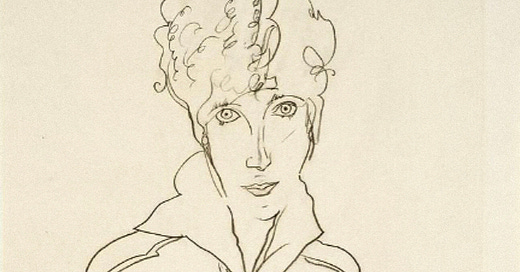A man in trouble who cannot flee
Surrendered art raise more questions about art as currency and endings that are beginnings
Today’s news that the Manhattan DA would return seven pieces of art created by Egon Schiele, to the heirs of collector Fritz Grünbaum, including an heir, Judge Timothy Reif, who is a Judge on the Court of International Trade, is medicinal, artisanal, and educational.
The pieces were “surrendered” and “recovered” by, and from, notable collectors, and even more notable museums who, with all their knowledge and research capabilities were masked by selling agents, art dealers, who may too have been misled. The recovered art is headed for auction by the family foundation.
Sam Shepherd, who hated endings, also wrote:
“The most authentic endings are the ones which are already revolving towards another beginning”
So, endings are just prologues that raise many questions and lessons about pathological liars who shielded the facts of theft, now uncovered. Things break, people break but there is always a new beginning after an ending, especially after a false ending.
So, who lied?
After WWII, many Schieles and other works from collection surfaced on the art market in the possession of a Swiss dealer, Eberhard Kornfeld. They were later sold to an American dealer, Otto Kallir, who had a gallery in New York, before being sold on to a variety of buyers and widely dispersed, according to the Times piece.
Backstory. There always is.
In the autumn of 1918, the Spanish flu pandemic reached Vienna. Edith Schiele, who was six months pregnant, died from the disease on 28 October. Schiele died only three days after his wife. He was 28 years old. During the three days between their deaths, Schiele drew a few sketches of Edith. This was not one of them:
Portrait of Edith Schiele, 1912
After his arrest, the Nazis compelled art collector Fritz Grünbaum’s wife to surrender the pieces, later sold to finance their movement, and Grünbaum died in Dachau in 1941. Compelled, you know what that means. They pretended he would survive if he signed over the pieces.
Judge Ramos’ decision states: “a signature at gunpoint cannot lead to a valid conveyance” of someone’s property. The other ending to the story is that crime lords and fugitives use art to bank ill gotten gains. Can art dealers be held to a higher standard here, too?
Keep reading with a 7-day free trial
Subscribe to The Ampersand Journal & to keep reading this post and get 7 days of free access to the full post archives.





